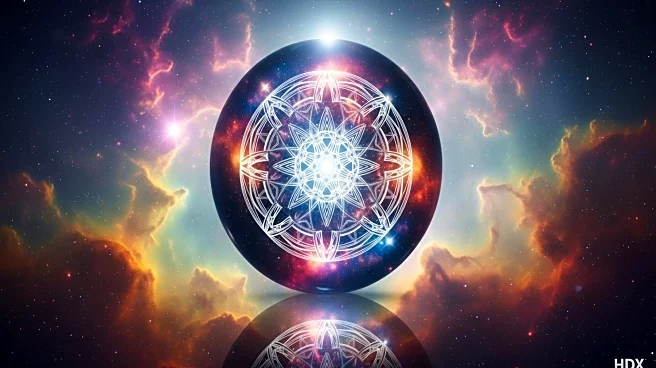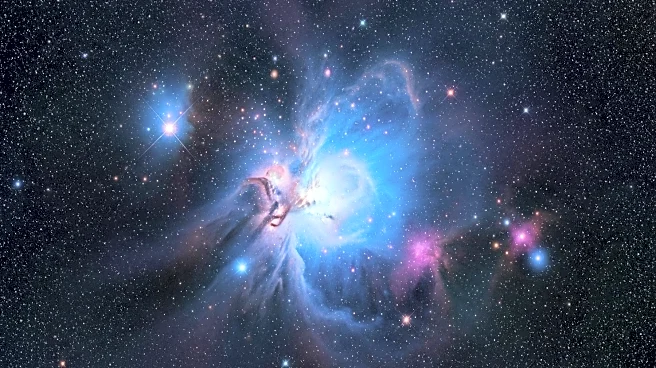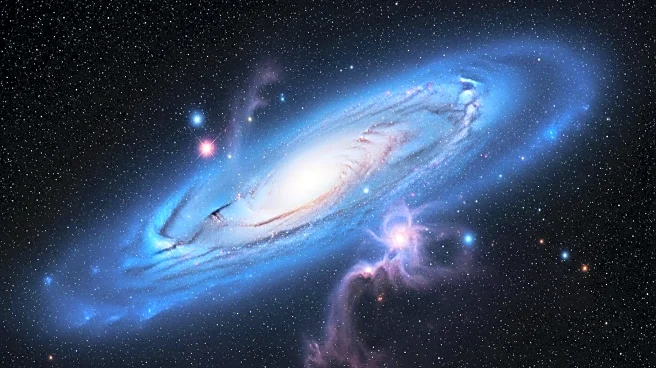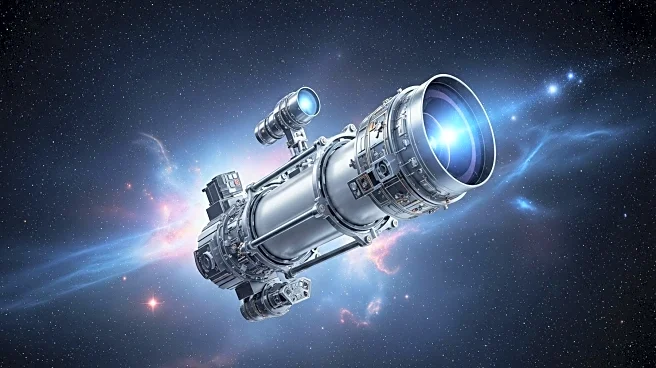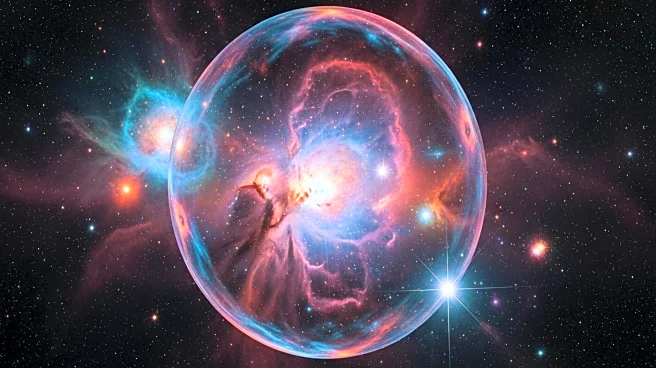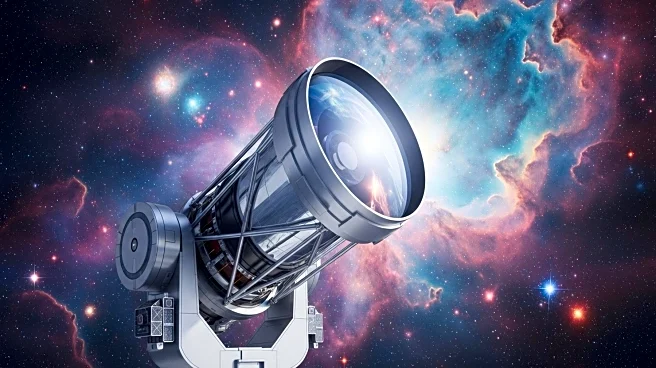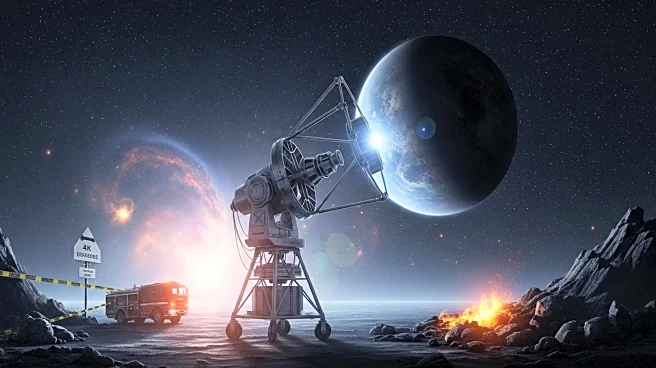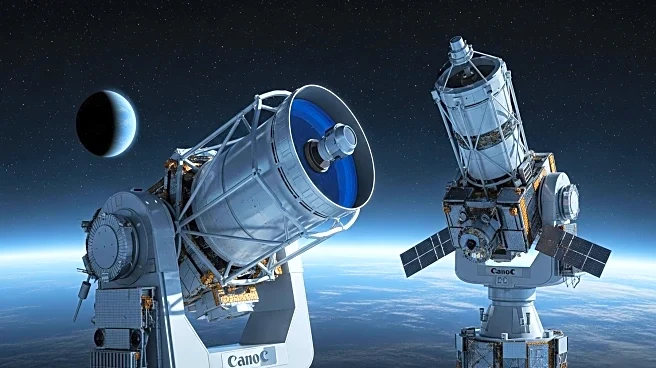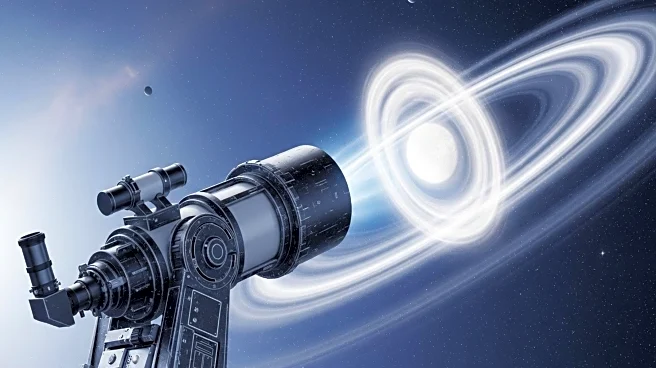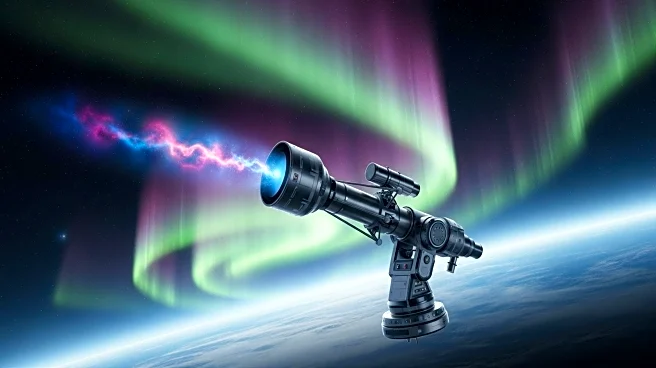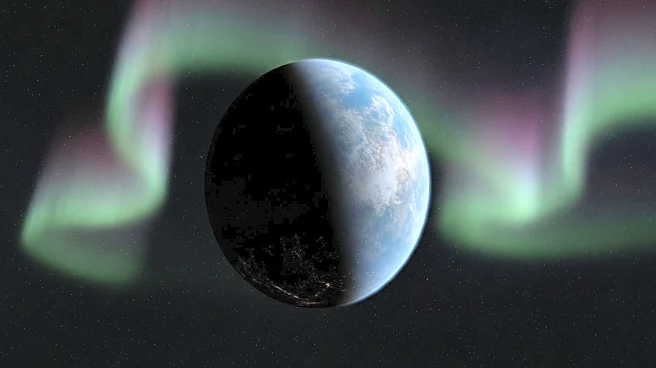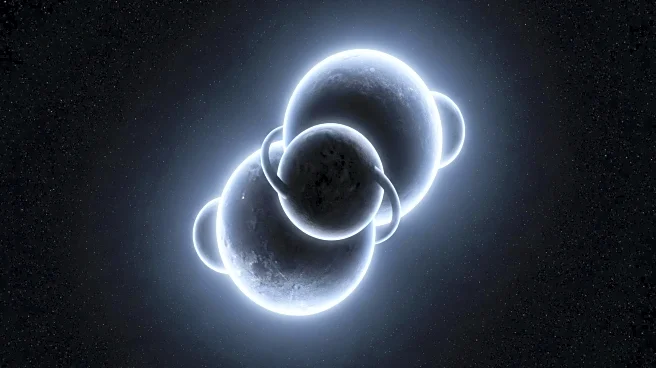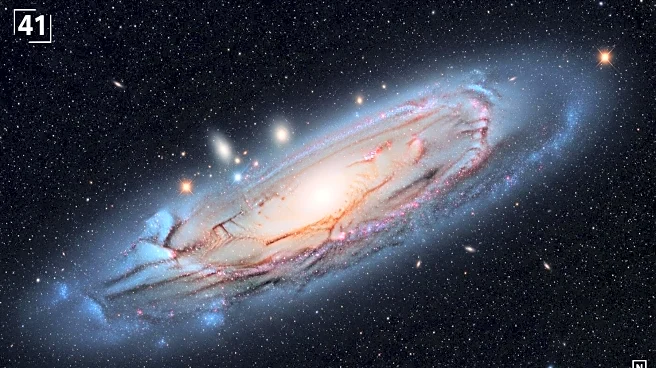What is the story about?
What's Happening?
The James Webb Space Telescope (JWST) has provided a detailed view of the Crystal Ball Nebula (NGC 1514), located 1,500 light-years from Earth. The nebula, formed from the outer layers of a dying star, features intricate patterns and clumpy knots in its rings. JWST's Mid-Infrared Instrument (MIRI) has allowed astronomers to examine the nebula's turbulent nature, revealing its hourglass shape and bright pink core. The nebula is sculpted by a binary star system at its center, which has been influencing its structure for over 4,000 years.
Why It's Important?
The JWST's observations of the Crystal Ball Nebula provide valuable insights into the final stages of stellar evolution, particularly for stars similar to the Sun. Understanding the formation and structure of planetary nebulae helps astronomers learn more about the life cycles of stars and the processes that lead to their demise. The detailed imagery from JWST enhances our knowledge of stellar dynamics and the interactions between binary star systems and their surrounding nebulae.
AI Generated Content
Do you find this article useful?
